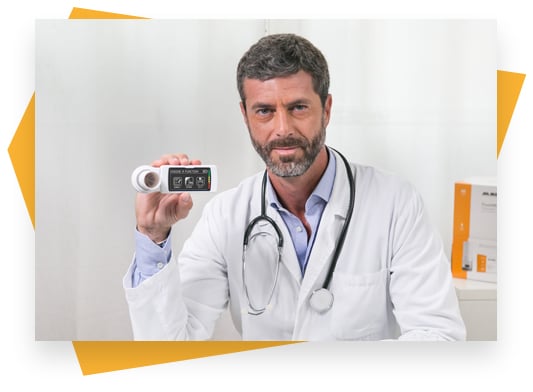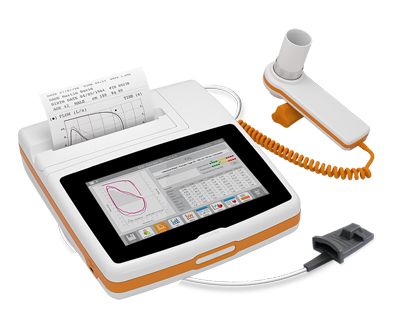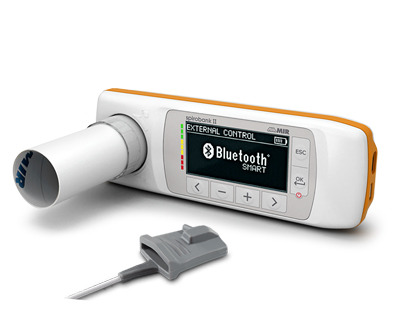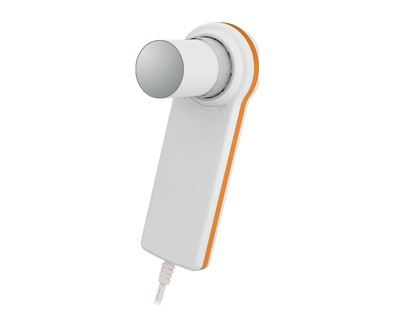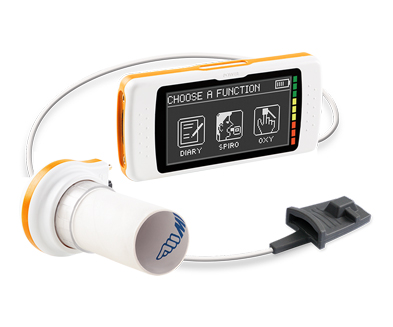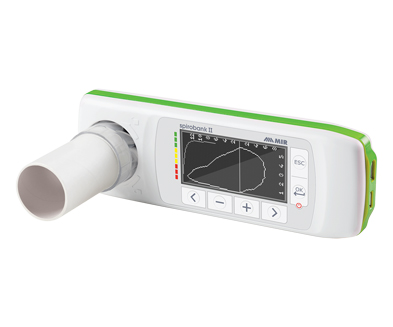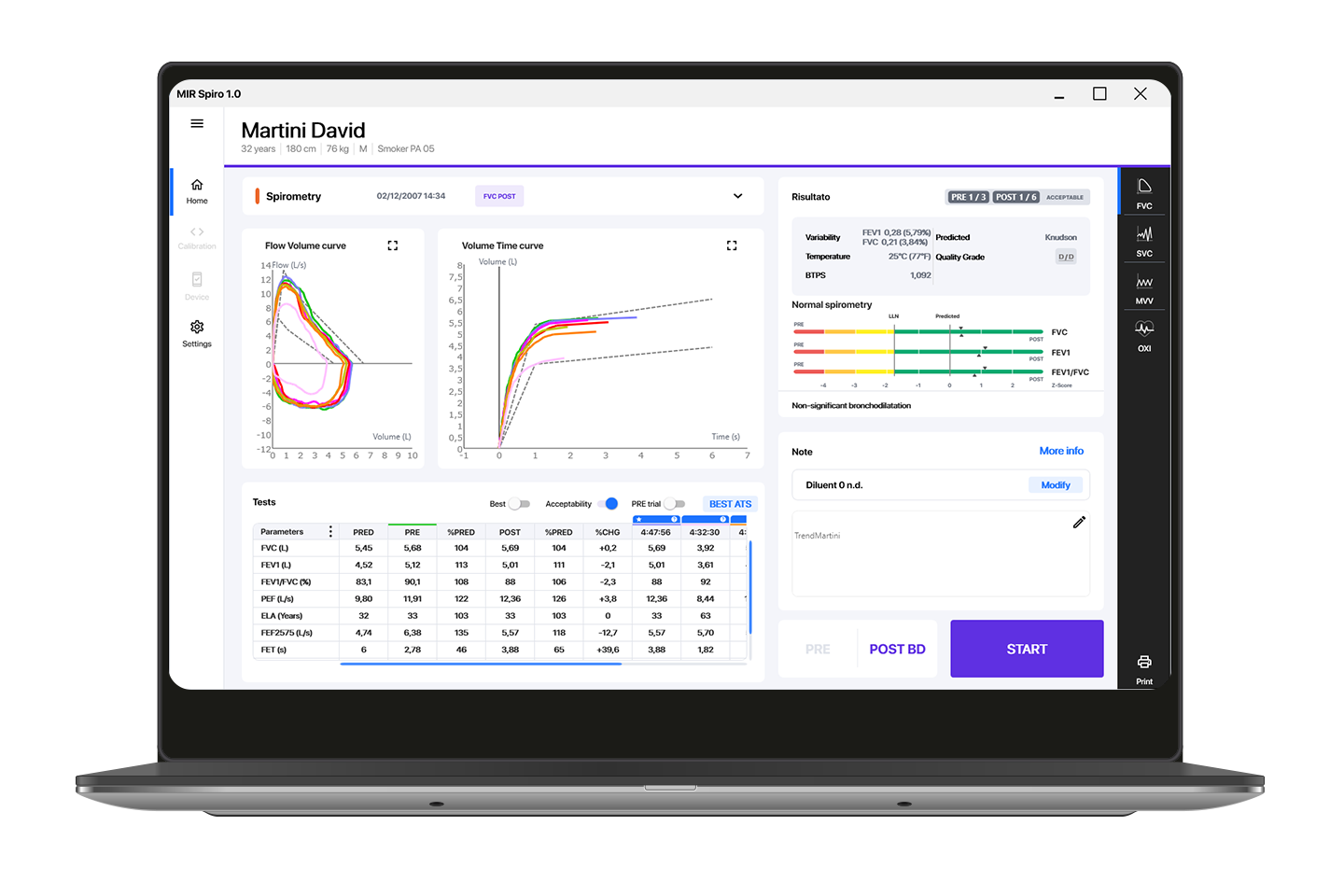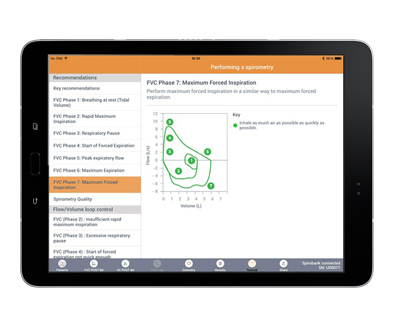What are the benefits of spirometry testing?
Spirometry is a safe and painless test that provides valuable information about a patient's lung health and respiratory conditions. Spirometry helps healthcare professionals:
- Diagnose and monitor lung diseases
- Assess the severity of lung disease
- Track the progress of lung disease over time
Spirometry testing helps physicians and healthcare professionals understand, diagnose, and guide treatment for lung health and lung diseases.
Which spirometer is best suited for my clinical setting?
The best spirometer for your clinical setting depends on your needs.
- For hospitals, the Spirolab offers advanced features like touchscreen controls and (optional) integrated oximetry.
- For clinics, the Spirobank II is a compact and versatile option that is ideal for everyday testing.
- For more comprehensive cardiovascular analysis, the Spirodoc is a fully-featured spriometer that includes multiple oximetry test modes.
Each model caters to different environments, offering flexibility in lung function testing. Talk with one of our team members who can help you determine the best option for your needs.
What are the technical specifications of MIR spirometers?
The technical specifications for MIR spirometers vary by model, but include high-accuracy sensors for precise lung function measurements. Each spirometer is designed to meet the accuracy standards set by ATS/ERS guidelines. Some devices also feature ultrasonic or turbine-based sensors, and the calibration frequency depends on the turbine type. Most spirometry testing devices require routine calibration to maintain accuracy.
If you would like more detailed information on individual devices, including sensor technology and calibration specifics, one of our MIR team members would be happy to discuss your options with you.
Are professional spirometry machines compatible with EHR systems?
Several MIR professional spirometry machines, such as the Spirolab and Spirodoc, are designed to integrate with PC software and offer compatibility with electronic health record (EHR) systems. Contact our team directly to learn more about our system’s capabilities.
What are the compliance standards MIR spirometry devices adhere to?
MIR professional spirometry testing devices are designed to align with guidelines set by the American Thoracic Society (ATS) and the European Respiratory Society (ERS). These standards ensure lung function measurements' accuracy, repeatability, and reliability. MIR is ISO certified and all devices meet CE and MDR compliance.
How do spirometry devices handle pediatric vs. adult patients?
Spirometry devices, such as the Spirolab and Spirodoc, from MIR handle pediatric and adult patients by offering customizable settings, including different predicted value equations and reference ranges based on age, height, and gender. Some models feature software that can adapt the testing protocol for children by using animated incentives to encourage proper test effort, which is particularly helpful for younger patients. This ensures accurate and reliable results for both pediatric and adult populations.
Can I get demo spirometry units for trial?
Contact MIR USA directly using our Contact Us form to inquire about potential trial options for professional spirometry devices.
How do I prepare patients for a spirometry test?
- Explain the spirometry test: Talk with your patient about why it is being done and what to expect during the test.
- Provide clear instructions: Provide your patient with clear instructions on how to perform the test. This should include how to position themselves and how to blow into the device.
- Advise patients on medication: Advise patients to follow their medication regimen as usual unless instructed otherwise by you.
- Food and drink: Advise patients to avoid eating a heavy meal or drinking alcohol for several hours before the test, as this can affect the results.
- Clothing: Ask patients to wear comfortable, loose-fitting clothing that allows for easy movement of the chest and waist.
- Expectations: Let patients know the test is not painful and that the results may help you determine the appropriate diagnosis and treatment plan for their lung condition.
How are spirometry test results reported?
Spirometry test results are typically reported in several ways. The most common measurements include:
- Forced vital capacity (FVC): The total amount of air the lungs can breathe out after taking a deep breath. These results can be exported for printing in several formats, including PDF, CSV and Excel format.
- Forced expiratory volume in one second (FEV1): The amount of air lungs can breathe out in the first second of a forced exhalation.
- FEV1/FVC ratio: The ratio of FEV1 to FVC. This ratio is a good measurement of how effectively the lungs are able to empty.
- Peak expiratory flow (PEF): The fastest speed at which the patient can exhale.
- Residual volume (RV): The amount of air that remains in the lungs after the patient has exhaled as much air as possible.
After the test concludes, interpretations are provided based on a comparison to normal values derived from studies done on similar populations to the patient in terms of age, gender, and height.
